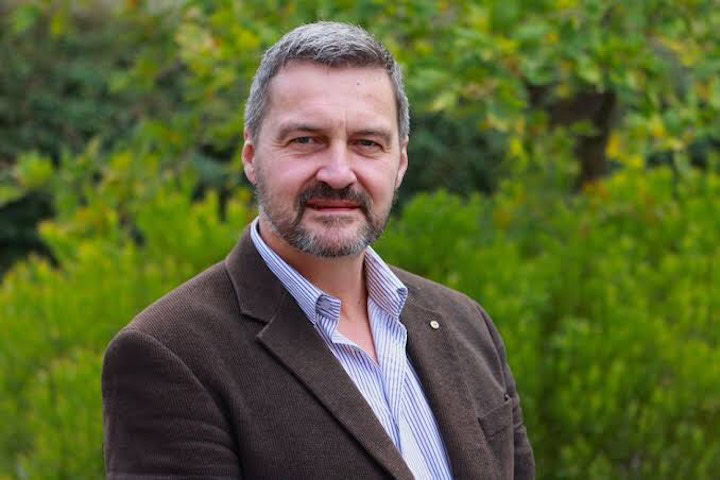
The Bisexual Boom: How Bisexuality is Skyrocketing Across Generations

As a part of Bi+ Awareness Week 2024, Steve Spencer and Chad Barnier – hosts of the podcast – delve into this generational rise they are dubbing ‘The Bisexual Boom’, exploring its implications and the hope it brings for the future.
In recent years, society has witnessed a remarkable transformation in how individuals identify their sexuality. Among these changes, the surge in bisexual identification stands out as a significant trend.��
Mislabelled by Society: Steve’s Path to Bisexuality
From a young age, Steve felt attraction to both men and women, but societal norms didn’t allow him to express this truth. In his early teens, recognising his attraction to the same gender, Steve sought help from a psychiatrist. Instead of understanding his bisexuality, the psychiatrist mislabeled him as gay and for over a decade, Steve navigated life under this mislabel, finding acceptance within the gay community but never feeling entirely himself.
“It took years of living under a mislabel to finally embrace my true self,” Steve shares. In his late 20s, he courageously came out again—this time as bisexual. This wasn’t just a label change; it was a profound affirmation of his true identity.
Coming out as bisexual wasn’t a walk in the park. Steve faced mockery, teasing, and hurtful comments from those who misunderstood or dismissed his identity.
“But being in the closet was incredibly harmful to my mental health. It felt like I was locked in chains,” he reflects. “It’s such a good feeling to be out and living my truth.”
His story underscores the critical need for accurate self-identification and the profound effects of societal misunderstanding on individuals.
The Rise in Bisexual Identification
The latest reveals a number of startling statistics: firstly, within the LGBTQI+ community, 57.3% identify as bisexual! This equals out to 4.4 percent of US adults as a whole.
When broken down by generation, the increase is even more pronounced:
- Silent Generation: 0.1 percent
- Baby Boomers: 0.6 percent
- Generation X: 1.9 percent
- Millennials: 5.9 percent
- Generation Z: 15.3 percent
“It’s tripling with each generation!” Steve remarks, highlighting the exponential growth.
These statistics highlight the significant presence of bisexual individuals in the US.
In Australia, however, accurate data on bisexual Australians has long been elusive, hindering effective support and resource allocation.
Following recent against the government’s initial decision to exclude them, Australia has in the 2026 census.
This inclusion is a crucial step toward truly understanding and supporting the bisexual community (and the wider queer community!)—visibility matters.
Beyond Bisexuality: A Generational Shift in All LGBTQI+ Identities
This generational shift isn’t isolated to bisexuality alone. Across all LGBTQI+ identities, there has been a noticeable increase. Lesbians now constitute 3.0%, gays 2.6%, and transgender individuals 2.8% among Gen Z.
“We’re not just seeing more bisexuals; every generation is becoming more open and visible,” Chad adds, emphasising the broader trend of increased acceptance and self-identification.
Understanding The Bisexual Boom
One way to understand ‘The Bisexual Boom’ is through Steven‘s analogy of left-handedness. Just as left-handed individuals were once marginalised and misunderstood, leading to a lower reported prevalence, societal stigma around bisexuality has historically suppressed self-identification.
“Once left-handedness was accepted, and the numbers stabilised, we saw a true reflection of its presence in society. Similarly, as bisexuality gains acceptance, more individuals feel safe to identify openly,” Steve explains.
The Impact of Visibility on Bisexual Individuals
With increased visibility comes the hope of better access to essential resources. Studies like La Trobe University‘s and the AGJP‘s “Who I Am’��study highlight alarming health realities faced by bisexual individuals, including higher rates of:
- poor mental health
- sexual violence
- substance use
- suicidality
- experiencing homelessness
“Visibility isn’t just about numbers; it’s about ensuring that bisexual people receive the support and services they desperately need,” Chad asserts. This heightened awareness can drive funding and health services to address these critical issues effectively.
Steve agrees, adding, “It’s crucial to recognise and support bisexual individuals to ensure they don’t fall through the cracks of our advocacy and support systems.”
Moving Towards a More Inclusive Society
As ‘The Bisexual Boom’ continues, it paves the way for a more inclusive and understanding society. The increasing numbers signal a shift towards greater acceptance and normalisation of bisexuality.
“We’re witnessing history in the making. The future looks bright as more people embrace their true selves,” Steve shares with optimism.
‘The Bisexual Boom’ represents more than just statistical growth; it signifies a profound change in societal attitudes and self-perception. Steve and Chad are confident that this surge in visibility will unlock vital resources and foster genuine understanding, ensuring bisexual individuals receive the recognition and support they deserve.
Join the Conversation
For more insights and personal stories about the bisexual experience, you can tune into or follow us on Instagram and TikTok at @giveittomebi.








